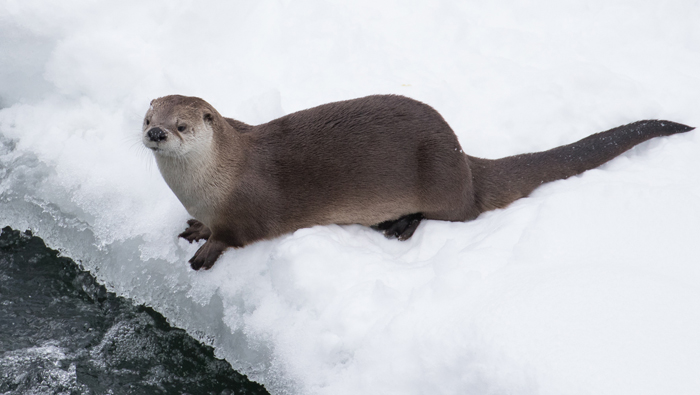
There are 13 species of otters. As members of the weasel family, otters are closely related to badgers, ferrets and minks. These semi-aquatic mammals are very smart and able to create and use tools.
Home sweet home
Otters are found on every single continent in the world except for Australia and Antarctica. Most live in freshwater lakes or rivers, but some have adapted to salt water. Contrary to popular belief, except for the sea otter, which lives almost exclusively in the water, most otters do not spend all of their time in water. River otters spend about two-thirds of their time on land. River otters build nests or dens called holts or couches. Depending on the species and location, otters can live in large groups or as single individuals.
Social animals
When they live in groups, otters are very social and spend a lot of time interacting, chatting, and playing. A group of otters is called a bevy, lodge or romp. When in the water, a group of otters is called a raft. It is not unusual for sea otters to hold hands with a buddy when sleeping, so that they do not become separated.
Otters are famous for their playful natures, and they are often seen frolicking. River otters like to do belly flops and side down slippery hills of mud, snow or ice.
What’s for dinner?
Otters are carnivores (meat eaters). A full-grown otter has 32 very sharp teeth, perfect for chewing and crunching through dinner. Otters spend four to five hours a day hunting and can eat 15 to 25 per cent of their body weight every day. Most species of otters feed on fish, but they also eat birds, lizards, eggs, insects, frogs, and crayfish. Sea otters feed primarily on mollusks and crustaceans, but they eat fish, too.
Just the facts
Otters range in colour from light brown or gray to a very deep, dark brown or black. They are equipped with webbed feet and sharp claws. Otters use their long tails as a rudder for steering when swimming. River otters have longer tails than sea otters, and they use them to help keep their balance when on land.
Growing up
Otters are fully mature and ready to reproduce between the ages of 2 and 6 years. After mating, it takes between 60 and 86 days before a litter is born. Females give birth to up to six pups per litter. Young otters stay with their mother for six months to a year. The otter’s webbed feet allow it to swim effortlessly and swiftly. Otters can reach a swimming speed of about 5.6mph (9kph). Each foot has five toes and sharp claws that provide a good grip when climbing out of the water. Depending on the species, otters range in length from 2 to 6 feet (60 to 180cm) and weigh 5 to 120 pounds (2 to 45kg). Males tend to be larger than females.
Did you know?